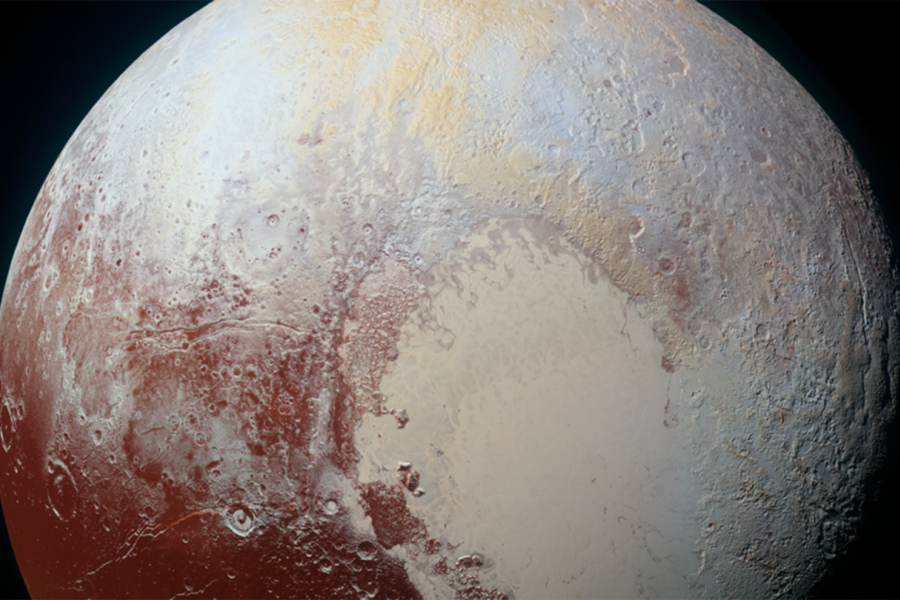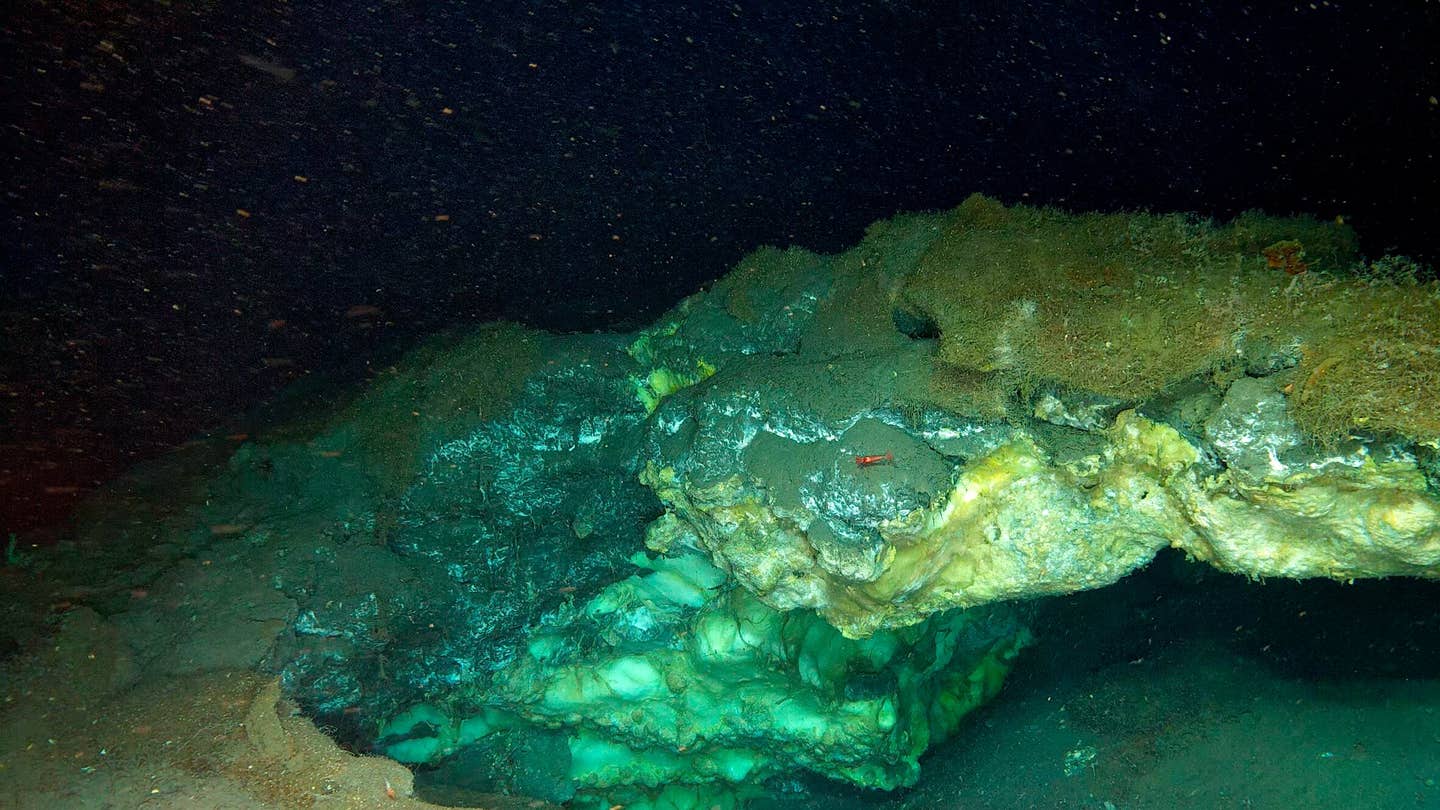Scientists make groundbreaking discovery about Pluto’s formation
The study offers a bold explanation, one that could shift how we think about planetary evolution across the solar system.

Discover how a rare “kiss and capture” impact gave rise to the Pluto-Charon binary system, shedding new light on the evolution and motion of icy worlds in the outer solar system. (CREDIT: NASA)
Billions of years ago, in the frozen edges of the solar system, a violent impact shaped one of space’s oddest pairs. Instead of a typical planet-moon setup, Pluto and Charon became a binary system. They circle a shared point in space, locked in a delicate, endless orbit. Their strange gravitational dance has puzzled scientists for decades.
Now, a team from the University of Arizona is shaking up long-standing theories about how that pairing came to be. Their new study offers a bold explanation, one that could shift how we think about planetary evolution across the solar system.
For years, the leading theory borrowed from Earth’s own history. Experts believed Charon was born from a collision so intense it liquefied both bodies. The crash either merged them or tossed debris into space that became a moon. This idea worked for Earth, but icy worlds like Pluto didn’t fit the same mold.
Pluto and Charon are too cold and too small for that molten chaos. The new model takes a closer look at what icy material can withstand. Instead of melting and merging, the bodies may have grazed each other, stuck together gently, and locked into orbit. This “kiss and capture” process could rewrite how we understand the birth of moons and planets far from the sun.
Pluto and Charon’s unique characteristics make them the largest binary system in the trans-Neptunian region. Their shared orbital axis and comparable sizes—with Pluto’s diameter about 1,200 kilometers and Charon’s about 600 kilometers—suggest a linked history. Their wide, circular orbit also implies a formation scenario that preserved substantial angular momentum.
Traditional models treated colliding bodies like fluid blobs, ignoring the strength of rock and ice. However, collisions involving smaller, colder objects, such as Pluto and Charon, occur at slower speeds and involve less mass than Earth’s moon-forming impact.
Adeene Denton, a NASA postdoctoral fellow, spearheaded this study using advanced simulations to account for the actual structural strength of these materials. Denton explained, “Pluto and Charon are smaller, colder, and primarily made of rock and ice. When we accounted for their material strength, we discovered something completely unexpected.”
Using simulations on a high-performance computing cluster, researchers found that during the collision, Pluto and proto-Charon temporarily stuck together, forming a “snowman-shaped” object. This brief union allowed gravitational forces to stabilize Charon’s orbit, evolving into the binary system seen today.
Related Stories
This “kiss and capture” scenario differs significantly from the traditional “hit and run” or “graze and merge” models. Erik Asphaug, a co-author of the study, noted, “The model parameters that work to capture Charon also place it in the correct orbit. You get two things right for the price of one.”
The collision’s dynamics required precise conditions. Simulations showed that a grazing impact angle, around 50–70 degrees, was critical for Charon’s capture. The relative collision velocity—approximately 1 kilometer per second—needed to align with the mutual escape velocity of the colliding bodies.
Additionally, the study modeled Pluto and proto-Charon as differentiated objects with rocky cores and icy mantles, approximating their compositions as 85% rock and 15% ice by mass.
The findings challenge earlier models suggesting extensive deformation and mixing during such impacts. Instead, this research shows that Pluto and Charon remained largely intact, preserving much of their original compositions. This intactness implies that Charon may be as ancient as Pluto.
Furthermore, the collision deposited substantial internal heat into both bodies, potentially influencing Pluto’s geological evolution and supporting theories of a subsurface ocean. This heat, generated through tidal friction as the bodies separated, may have sustained internal activity long after their formation.
The implications extend beyond Pluto and Charon. Other binary systems in the trans-Neptunian region, such as Eris and Dysnomia or Orcus and Vanth, might have formed through similar processes. Binary systems are common among large trans-Neptunian objects, yet their formation mechanisms remain debated.
Traditional theories, like the streaming instability—where gas drag in the protoplanetary nebula aggregates small solids into larger bodies—fail to explain the largest binaries. The “kiss and capture” model may offer a broader framework for understanding these systems.
Pluto’s geological evolution offers further intrigue. The internal heat generated during its collision with Charon could have contributed to the formation of a subsurface ocean. Such oceans are believed to exist beneath icy shells on other solar system bodies, like Europa and Enceladus, but their persistence on smaller worlds like Pluto is less certain.
Heat from tidal interactions might explain how Pluto retained enough thermal energy to support liquid water for extended periods. This discovery could reshape our understanding of habitability in the outer solar system, offering clues about where to search for extraterrestrial life.
The collision also shaped the distinctive features observed on Pluto’s surface. Geologic formations such as Sputnik Planitia, a vast nitrogen-ice glacier, might have connections to the heat and dynamics introduced during the Charon-forming event.
These features suggest that Pluto experienced significant resurfacing, driven by internal processes fueled by the collision’s aftermath. Studying these processes could reveal more about the interplay between external impacts and internal planetary activity.
The discovery’s implications for binary systems extend to their potential role in broader solar system formation theories. By analyzing how Charon’s orbit evolved to its current state, researchers can refine models of planetary migration.
This binary system, like others, acts as a natural laboratory for understanding angular momentum transfer, tidal dissipation, and orbital mechanics. The “kiss and capture” scenario provides a case study for how binary systems can form and remain stable over billions of years.
The research team is already planning follow-up studies. Key questions include how tidal forces influenced the early evolution of Pluto and Charon when they were closer and how this scenario aligns with current geological features.
Denton emphasized, “We’re particularly interested in how this initial configuration affects Pluto’s geological evolution. The heat from the impact and subsequent tidal forces likely played a crucial role in shaping the features we see on Pluto today.”
Published in Nature Geoscience, this study invites a reevaluation of planetary formation models. By incorporating material strength into impact simulations, it provides a more nuanced understanding of how icy bodies in the outer solar system evolve. The “kiss and capture” scenario not only explains Charon’s formation but also deepens our appreciation of the dynamic processes that shape planetary systems.
Beyond Pluto and Charon, these findings could revolutionize our perspective on other icy bodies throughout the solar system. The techniques and insights developed in this study could apply to moons, asteroids, and other objects that bear the scars of ancient collisions.
As researchers continue to refine their models, the “kiss and capture” mechanism may unlock answers to long-standing questions about the origins and evolution of celestial bodies across the cosmos.
Note: Materials provided above by The Brighter Side of News. Content may be edited for style and length.
Like these kind of feel good stories? Get The Brighter Side of News' newsletter.



